Introducción A La Cerámica Jōmon: - Tipos Cerámica Jōmon Se Dividen En 5 : 1 Fukabachi 2 Hachi 3
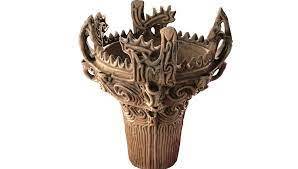



Introducción a la cerámica Jōmon: - Tipos cerámica Jōmon se dividen en 5 : 1 fukabachi 2 hachi 3 asabachi 4 tsubo 5 chuko - ¿Cónocian algúnos de estos tipos? os deseo un feliz día un cordial saludo. - Introduction to Jōmon Pottery: - Jōmon ceramic types are divided into 5: 1 fukabachi 2 hachi 3 asabachi 4 tsubo 5 chuko - Do you know any of these guys? I wish you a happy day, a cordial greeting. - 縄文土器の紹介: - 縄文土器は次の5種類に分類されます。 深鉢 1個 2ハチ 3アサバチ 4坪 5中子 - この人たちを知っている人はいますか? 幸せな 一日をお祈りします。心からのご挨拶を申し上げます。
More Posts from Noticiasarquelogicasjaponesas and Others


Capítulo 2: El origen de un país y su prehistoria, un paseo por la historia del país del sol naciente. El Pleistoceno Sean bienvenidos, a una nueva serie, de arqueología prehistórica en esta ocasión, nos trasladamos al país del sol naciente. En el capítulo anterior, estuvimos dando una pequeña introducción, de la prehistoria nipona, ha llegado la hora de matizar más en profundidad cada apartado.
-
En este capítulo, nos vamos a centrar en el pleistoceno, para entender la evolución meteremos, algunos contextos del mundo para que puedan ir comprendiendo el pleistoceno japonés del resto del mundo. La prehistoria humana comienza hace unos 2,5 a 7 millones de años aproximadamente, los primeros homínidos, salieron de África, Como son el caso de: Homo neanderthalensis, Homo heidelbergensis, Homo ergaster entre otros homínidos.
-
Sabemos que los primeros homínidos, que salieron de la cuna de áfrica, fueron los homo habilis y erectus los cuales se fueron desplazando por los distintos continentes, pasando primero por la zona de la península del Sinaí y luego pasaron por el corredor siro palestino.
-
En el capítulo anterior, salió la pregunta¿Cómo llegaron los primeros homínidos al archipiélago? Llegaron hace unos 30.000 a 90.000 aproximadamente, han salido recientes estudios arqueológicos, en respecto a esta parte, la cual ya os la comentaré en una noticia arqueológica, ¿De qué medio disponían?, probablemente, a través de canoas o balsas llegando así a la zona de Okinawa, ¿Quiénes habitaban Japón cuando ellos llegaron?, pues los Ainu, ¿cuándo llegaron?, aproximadamente hace unos 110.000 y 10.000 años antes de cristo.
-
Este capítulo lo vamos a tener que ir dividiendo en partes para irlo trabajando poco a poco. Espero que os haya gustado y nos vemos en el siguiente capítulo. Un fuerte abrazo.

Sean bienvenidos japonesasarqueológicos a una nueva entrega arqueológica, en esta ocasión hablaremos de la primera moneda japonesa atrás vez de los restos Arqueológicos y de evidencias históricas dicho esto pónganse cómodos que empezamos. - ¿Cuándo surge la moneda en Japón? La primera moneda, oficialmente nace en el año 708 d.c llamada Wadokaichin, mientras tanto que en otros continentes del mundo como china o en el próximo oriente ya se habían creado la moneda y los primeros sistemas monetarios. ¿Qué había antes del 708 d.c? Pues había dos protomonedas una en el año 660 d.c. otra en el año 683, habían tomado como modelo la moneda china de 621 d.c - ¿Cómo se llamaban las dos monedas anteriores al siglo VIII d.c? Fuhonsen data del año 683 d.c y fue descubierta en 1998 Mumonginsen datada del año 660 d.c - La moneda Mumonginsen coincide con la leyenda de la fundación del estado japonés por el primer emperador Jinmu Tennō, según la historiografía moderna lo consideran un personaje ficticio hay que tener en cuenta que toda leyenda tiene una base real. - ¿Qué emperadores podemos encontrar en esta cronología según la historiografía y los restos arqueológicos? Los emperadores eran Tenji y Tenmu tennō. ¿Dónde fueron encontradas dichas monedas? fueron halladas en las ruinas de Asukaile en la prefectura de Nara en el pueblo de Asuka. - ¿Conocían estas monedas?¿Qué opinan ustedes al respecto? Espero que os haya gustado y nos vemos en la próxima publicación de arqueología nipona. - 日本の考古学者は新しい考古学の記事を歓迎します。今回は、考古学的遺跡や歴史的証拠の代わりに、最初の日本のコインについて話します。 - 日本ではいつ通貨が出現しますか?最初の通貨は、和同開珀と呼ばれる西暦708年に正式に誕生しましたが、中国や中東などの世界の他の大陸では、通貨と最初の通貨制度がすでに作成されていました。西暦708年以前は何がありましたか?ええと、2つのプロトコインがありました。1つは西暦660年にありました。別の683年に、彼らは621ADの中国の硬貨をモデルとして採用しました。 .- 8世紀以前の2枚の硬貨は何と呼ばれていましたか? 富本銭は西暦683年にさかのぼり、1998年に発見されました。 西暦660年のムモンギンセン ムモンギンセンの硬貨は、初代神武天皇による日本国家の建国の伝説と一致しており、現代の歴史学によれば、彼は架空の人物であると考えられており、すべての伝説には本当の根拠があることを考慮に入れる必要があります。 - 歴史学と考古学的遺跡によると、この年代学でどの皇帝を見つけることができますか?天武天皇は天武天皇と天武天皇でした。これらのコインはどこで見つかりましたか?奈良県のあすか町のあすかいれ廃墟で発見されました。 - これらのコインを知っていましたか?それについてどう思いますか?あなたがそれを気に入って、次の日本の考古学の出版物であなたに会えることを願っています。 - Japanese archaeologists are welcome to a new archaeological installment, this time we will talk about the first Japanese coin back instead of the Archaeological remains and historical evidence, having said that, make yourself comfortable, we begin. - When does currency emerge in Japan? The first currency was officially born in the year 708 AD called Wadokaichin, meanwhile in other continents of the world such as China or the Middle East the currency and the first monetary systems had already been created. What was there before 708 AD? Well, there were two proto-coins, one in the year 660 AD. another in the year 683, they had taken as a model the Chinese coin of 621 AD .- What were the two coins before the 8th century AD called? Fuhonsen dates back to 683 AD and was discovered in 1998. Mumonginsen dated to 660 AD The Mumonginsen coin coincides with the legend of the foundation of the Japanese state by the first emperor Jinmu Tennō, according to modern historiography they consider him a fictitious character, it must be taken into account that all legends have a real basis. - Which emperors can we find in this chronology according to historiography and archaeological remains? The emperors were Tenji and Tenmu tennō. Where were these coins found? They were found in the Asukaile Ruins in Nara Prefecture in the town of Asuka. - Did you know these coins? What do you think about it? I hope you liked it and see you in the next Japanese archeology publication.






Capítulo 1 introducción: Sean bienvenidos japonistasarqueológicos a una nueva entrega, de arqueología nipona en esta ocasión vamos a presentar a uno de los arqueólogos japoneses más notables se llama Tadahiro Aizawa ¿Quién fue? Y ¿Qué aportó a la ciencia arqueológica? Dicho esto pónganse cómodos que empezamos. - Tadahiro Aizawa nació el 21 de junio durante la era Taisho (1912-1926), nació en el distrito de Ebana en Tokio, desde la temprana edad de los 8 años ya tenía interés por las reliquias antiguas, a los 9 años de edad sus padres se habían divorciado en los años 30. A la edad de 11 se mudó a la ciudad de Kiryu, Gunma, en 1938 a la edad de 12 años ingresó a la Escuela nocturna Shotoku Jinjo de la ciudad de Tokio durante esa fecha japón estaba en plena guerra contra china en la llamada guerra sino-japonesa, cabe destacar que la era showa empezó en 1926 y terminó en la de década de los 80. - Espero que os haya gustado esta presentación y viene de camino los capítulos 3 y 4 de la serie japón en su arqueología poco a poco lo iré trayendo que pasen una buena semana y nos vemos en próximas publicaciones de historia y arqueología nipona. - Un cordial saludo. - 第 1 章の紹介: 日本考古学の新しい記事へようこそ考古学者、今回は最も注目すべき日本の考古学者の 1 人、彼の名前は相沢忠宏. 彼は誰だった?そして、彼は考古学に何を貢献したのでしょうか?そうは言っても、気楽に始めましょう。 - 相沢忠宏は大正時代(1912-1926)の6月21日に生まれ、東京の江花地区で生まれ、8歳の頃からすでに古代の遺物に興味を持っていました. 1930年代に離婚。 11 歳のときに群馬県桐生市に移り、1938 年に 12 歳のときに東京市の聖徳尋常夜学校に入学しました。その日、日本はいわゆる清戦争で中国と戦争をしていました。 -日本人は、昭和が1926年に始まり、1980年代に終わったことに注意する必要があります. - このプレゼンテーションと考古学における日本シリーズの第 3 章と第 4 章が進行中であることを願っています。少しずつお届けします。良い週をお過ごしください。また、日本の歴史と考古学の今後の出版物でお会いしましょう。 - 心のこもった挨拶。 - Chapter 1 introduction: Welcome archaeologists to a new installment, of Japanese archaeology, this time we are going to present one of the most notable Japanese archaeologists, his name is Tadahiro Aizawa. Who was he? And what did he contribute to archaeological science? With that said, make yourselves comfortable, let's get started. - Tadahiro Aizawa was born on June 21 during the Taisho era (1912-1926), he was born in the Ebana district of Tokyo, from the early age of 8 he already had an interest in ancient relics, at the age of 9 his parents they had divorced in the 1930s. At the age of 11 he moved to the city of Kiryu, Gunma, in 1938 at the age of 12 he entered the Shotoku Jinjo Night School in the city of Tokyo during that date Japan was at war against China in the so-called Sino War -Japanese, it should be noted that the showa era began in 1926 and ended in the 1980s. - I hope you liked this presentation and chapters 3 and 4 of the series Japan in its archeology are on the way, little by little I will bring it, have a good week and see you in future publications of Japanese history and archaeology. - A cordial greeting.





Sean bienvenidos japonistasarqueológicos, a una nueva entrega de arqueología japonesa, una vez dicho esto pónganse cómodos que empezamos. - Sí, hablamos de la armadura japonesa, se nos viene a la cabeza, la más característica, la de los samurais. ¿Hay alguna armadura más antigua? Sí, datan del periodo kofun o protohistorico, se sabe que en periodos anteriores las tenían de madera por los pocos restos que se han conservado al yayoi, ya que el Jomon fue un periodo de paz y no hay indicios de violencia. - La imagen de estas armaduras la tenemos en las famosas figuras, haniwa hechas de arcilla y utilizadas para los enterramientos, aunque todavía siguen siendo un misterio, estas armaduras estaban manufacturadas de hierro. - Espero que os haya gustado y nos vemos en próximas publicaciones, que pasen una buena semana. - 日本の考古学者たちよ、ようこそ。そう言われたら、くつろいで、さっそく始めましょう。 - そうですね、日本の鎧について話しているのですが、一番特徴的なのは侍の鎧ですね。 - この鎧のイメージは、土で作られ、埋葬に使われた有名な埴輪に見ることができますが、まだ謎が多いのですが、この鎧は鉄で作られていたのですね。 - 気に入っていただけたでしょうか、また今後の記事でお会いしましょう、良い一週間をお過ごしください。 - Welcome, Japanese archaeologists, to a new installment of Japanese archaeology, and once that's been said, make yourselves comfortable and let's get started. - Yes, we are talking about Japanese armour, the most characteristic one comes to mind is that of the samurai, are there any older armour? yes, they date from the Kofun or proto-historic period, we know that in earlier periods they were made of wood because of the few remains that have been preserved in the yayoi, since the Jomon was a period of peace and there is no evidence of violence. - The image of this armour can be seen in the famous haniwa figures, made of clay and used for burials, although they are still a mystery, these armours were made of iron. - I hope you liked it and see you in future posts, have a nice week.

Sean bienvenidos a un nuevo apartado de la cuenta jainistasarqueólogos, para estrenarlo vamos a hacer un reel a modo debate si os parece bien dicho esto pongan cómodos que empezamos. - ¿Por qué hay esvásticas o cruces gamadas en Japón, india, etc.? Me gustaría aclarar que esta publicación no busca incitar la motivación u odio hacia dicho símbolo, voy a explicaros un poco el verdadero del símbolo y de cómo fue utilizado para el mal. La cruz gamada se usa en muchas culturas del mundo desde el neolítico para adorar al sol, además significa buena fortuna o bienestar, es muy usada por el hinduismo, los antiguos griegos, etruscos y de cómo un simple símbolo dependiendo de cómo se enfoque puede cambiar bruscamente de bueno a malo o a la inversa. - ¿Qué opinan ustedes? Leo gustosamente los comentarios, por favor es un debate, se intenta no buscar idolatrías, yo me mantengo neutro. - Espero que os guste y nos vemos en próximas publicaciones, que pasen una buena semana. - Welcome to a new section of the Jainistasarqueólogos account, to release it we are going to do a reel in debate mode if you think this is well said, make us comfortable that we start. - Why are there swastikas or swastikas in Japan, India, etc.? I would like to clarify that this publication does not seek to incite motivation or hatred towards said symbol, I am going to explain a little about the true symbol and how it was used for evil. The swastika is used in many cultures of the world since the Neolithic to worship the sun, it also means good fortune or well-being, it is widely used by Hinduism, the ancient Greeks, Etruscans and how a simple symbol depending on how it is focused can change abruptly from good to bad or vice versa. - What do you think? I read the comments with pleasure, please, it's a debate, we try not to look for idolatry, I remain neutral. - I hope you like it and see you in future publications, have a good week. - アカウントの新しいセクションへようこそ、それを開くために、我々はあなたがそれが良いと思う場合は、議論としてリールを作るつもりですので、自分自身を快適にし、始めましょう。 - なぜ日本やインドなどに鉤十字や卍があるのでしょうか?この投稿は、シンボルに対する動機や憎悪を煽るためのものではないことを明確にしておきたい。実際のシンボルと、それがどのように悪のために使われたのかについて少し説明しよう。卍は新石器時代から世界中の多くの文化で太陽を崇拝するために使われており、幸運や幸福を意味するものでもある。ヒンドゥー教、古代ギリシャ、エトルリアなどで広く使われており、単純なシンボルがアプローチの仕方によって、善から悪へ、あるいはその逆へと突然変化するものなのだ。 - どう思いますか?私は中立を保ちますので、偶像崇拝を探さないでください。 - それではまた、良い1週間を。
Sean bienvenidos, japonistasarqueologicos a una nueva entrega de historia nipona en la que os explico la evolución del artefacto Tanegashima, una vez dicho esto pónganse cómodos, que empezamos. - Fue introducido por los portugueses en 1543, en pleno periodo Muromachi desde la isla que lleva su mismo nombre, el polvo negro químico fue inventado por los chinos en el siglo IX, se usaba para los fuegos artificiales, después se trasladó a otros ámbitos. - Se cuenta que cuando llegó a Japón, un herrero vendió a su hija para poder producir dicho artefacto, era un producto raro y poco efectivo, no todos los samuráis la utilizaban, ya que muchos preferían, todavía, las técnicas tradicionales más efectivas, además la consideraban un elemento deshonroso. El hecho más notable fue el 28 de junio de 1575 en Nagashino, en la Provincia de Mikawa. El clan de Oda Nobunaga se enfrentaba contra el clan Takeda conocido por su temible caballería, Oda Nobunaga emplearía unas empalizadas para proteger a sus soldados de las sucesivas cargas, en esta batalla se usaría el artefacto en masa. Esto lo podéis ver en el famoso videojuego de Total War: Shogun 2. - Esperó que os haya gustado y nos vemos en próximas publicaciones que pasen una buena semana. - 日本の考古学者の皆さん、種子島の遺物の変遷を説明する新しい日本史へようこそ。 - 室町時代中期の 1543 年に、同じ名前の島からポルトガル人によって導入されました。化学黒色火薬は 9 世紀に中国人によって発明され、花火に使用されましたが、その後他の用途に移りました。地域。 - 彼が日本に到着したとき、鍛冶屋はその工芸品を製造できるように娘を売ったと言われています。それは希少で非効率な製品でした。多くの武士が依然として最も効果的な伝統的な技術を好んだため、すべての武士がそれを使用したわけではありません。彼らはそれを考慮しました不名誉な要素。 最も注目すべき出来事は、1575 年 6 月 28 日に三河国長篠で起こった。 織田信長の一族は、恐ろしい騎兵で知られる武田家と対峙しました。織田信長は連続突撃から兵士を守るために柵を使用しました。この戦いでは、アーティファクトが一斉に使用されました。 これは、有名なビデオ ゲーム Total War: Shogun 2 で見ることができます。 - 気に入っていただければ幸いです。今後の投稿でお会いしましょう。良い一週間をお過ごしください。 - Welcome, Japanesearchaeologicalists, to a new installment of Japanese history in which I explain the evolution of the Tanegashima artifact. Having said that, make yourself comfortable, let's begin. - It was introduced by the Portuguese in 1543, in the middle of the Muromachi period from the island that bears the same name. The chemical black powder was invented by the Chinese in the 9th century. It was used for fireworks, then it moved to other areas. - It is said that when he arrived in Japan, a blacksmith sold his daughter to be able to produce said artifact. It was a rare and ineffective product. Not all samurai used it, since many still preferred the most effective traditional techniques. They considered it a dishonorable element. The most notable event was on June 28, 1575 in Nagashino, Mikawa Province. Oda Nobunaga's clan faced the Takeda clan, known for its fearsome cavalry. Oda Nobunaga would use palisades to protect his soldiers from successive charges. In this battle, the artifact would be used en masse. You can see this in the famous video game Total War: Shogun 2. - He hoped you liked it and see you in future posts, have a good week.
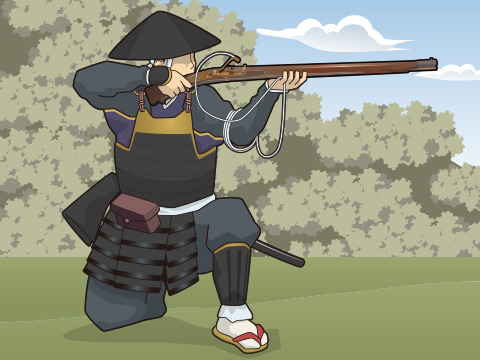

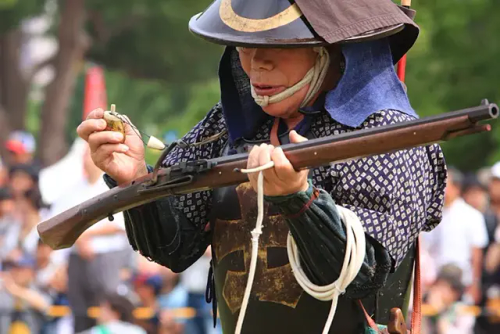
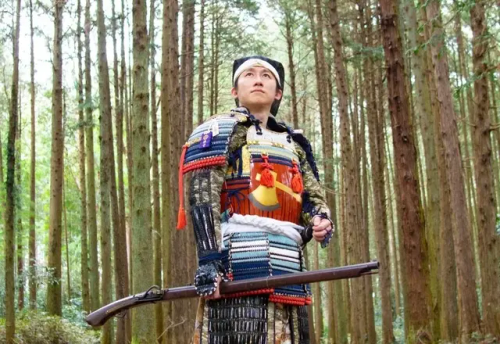
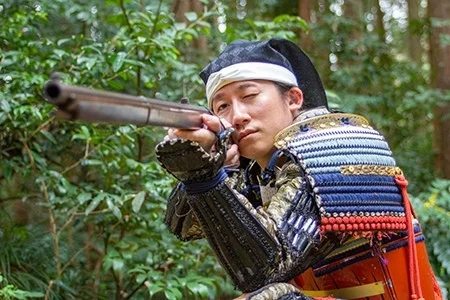

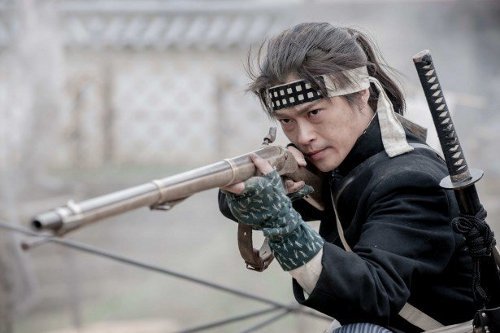




Sean bienvenidos , arqueojaponólogos; quiero hacer un llamamiento: en Instagram abundan cuentas así como la de la foto que usan Wikipedia sin rigor cientifista y lo peor es que hay gente incrédula, o no sé cómo llamarlos para suavizarlo. Hay que ser crítico con lo que se lee en internet. Si de verdad quieren aprender sobre algo, hay que leer hasta un máximo de 10 fuentes, incluso más, y después contrastar la información que leemos. Las fotos son una cosa aparte, pero también hay que tener cuidado con el material que se usa; yo me tiro días en publicar el contenido que ven en esta cuenta. Además, las fotos son dos recursos muy buenos para detectar el plagio y lo siento mucho por esa cuenta y todas las cuentas que son similares; si las ven, denuncien o bloqueen, no son de fiar, son cuentas que desinforman, además de la poca originalidad. - Hay fuentes más confiables que Wikipedia, como Google Scholar y Academia.edu, por poner unos ejemplos. Si todos unimos fuerzas, podremos eliminar de internet este tipo de gente y su contenido que solo sabe desinformar . - Que pasen una buena semana y nos vemos en próximas publicaciones . ¡Feliz año 2025! - ようこそ、日本考古学者の皆さん。訴えたいのですが、インスタグラムには写真のようなアカウントが科学的厳密性なしにウィキペディアを利用しているアカウントがたくさんありますが、最悪なのは信じられない人がいるということです。あるいは、彼らを何と呼んで和らげたらいいのかわかりません。インターネットで読むものには批判的でなければなりません。何かについて本当に知りたい場合は、最大 10 個の情報源、さらにそれ以上の情報源を読み、読んだ情報を比較する必要があります。写真は別のものですが、使用される素材にも注意する必要があります。私はこのアカウントでご覧いただくコンテンツを何日もかけて公開しています。また、写真は盗作を検出するための非常に優れたリソースであり、そのアカウントと同様のすべてのアカウントについて非常に申し訳ありません。それらを見かけたり、報告したり、ブロックしたりした場合、それらは信頼できず、オリジナリティの欠如に加えて、誤った情報を提供するアカウントです。 - いくつかの例を挙げると、Google Scholar や Academia.edu など、Wikipedia よりも信頼できる情報源があります。私たち全員が力を合わせれば、誤った情報を伝えることしか知らないこの種の人々とそのコンテンツをインターネットから排除することができます。 - 良い一週間をお過ごしください。また今後の投稿でお会いしましょう。 2025 年明けましておめでとうございます! - Welcome, archaeojapanologists; I want to make an appeal: on Instagram there are plenty of accounts like the one in the photo that use Wikipedia without scientific rigor and the worst thing is that there are people who are incredulous, or I don't know what to call them to soften it. You have to be critical of what you read on the Internet. If you really want to learn about something, you have to read up to a maximum of 10 sources, even more, and then compare the information you read. Photos are a separate thing, but you also have to be careful with the material you use; I spend days publishing the content you see on this account. Also, photos are two very good resources to detect plagiarism and I am very sorry for that account and all the accounts that are similar; if you see them, report or block them, they are not trustworthy, they are accounts that misinform, in addition to the lack of originality. - There are more reliable sources than Wikipedia, such as Google Scholar and Academia.edu, to give a few examples. If we all join forces, we can eliminate these types of people and their content that only knows how to spread misinformation from the Internet. - Have a good week and see you in future posts. Happy New Year 2025!




Sean bienvenidos a una estrega en esta ocasión, os voy a hacer un pequeño resumen de la actualidad en el país del sol naciente y en este caso, nos trasladamos a Hokkaidō (ほっかいどう) Las fuertes nevadas van desde el norte de Japón hasta el oeste de Japón y las fuertes nevadas desde Hokkaido principalmente a lo largo de las montañas de Kyushu se espera que la nieve continúe hasta el dia 25. - Espero que os haya gustado y nos vemos en próximas publicaciones de historia, arqueología entre otros temas del sol naciente. - この機会に初演へようこそ。私はあなたに日出ずる国の現在の状況を簡単に要約しようと思います。この場合、私たちは北海道に移動します (ほっかいどう)西日本や北海道から九州の山沿いを中心に大雪が25日まで続く見込みです。 - あなたがそれを気に入ってくれて、歴史、考古学、そして昇る太陽の他のトピックに関する今後の出版物でお会いできることを願っています. - Welcome to a premiere on this occasion, I am going to give you a brief summary of the current situation in the country of the rising sun and in this case, we move to Hokkaidō (ほっかいどう) Heavy snowfalls range from northern Japan to the western Japan and heavy snowfall from Hokkaido mainly along the mountains of Kyushu snow is expected to continue until the 25th. - I hope you liked it and see you in future publications on history, archeology, among other topics of the rising sun.




Introducción a la cerámica Jōmon: - Tipos cerámica Jōmon se dividen en 5 : 1 fukabachi 2 hachi 3 asabachi 4 tsubo 5 chuko - ¿Cónocian algúnos de estos tipos? os deseo un feliz día un cordial saludo. - Introduction to Jōmon Pottery: - Jōmon ceramic types are divided into 5: 1 fukabachi 2 hachi 3 asabachi 4 tsubo 5 chuko - Do you know any of these guys? I wish you a happy day, a cordial greeting. - 縄文土器の紹介: - 縄文土器は次の5種類に分類されます。 深鉢 1個 2ハチ 3アサバチ 4坪 5中子 - この人たちを知っている人はいますか? 幸せな 一日をお祈りします。心からのご挨拶を申し上げます。


Sean bienvenidos, japonistasarqueológicos, a una nueva entrega de religión nipona, una vez dicho esto pónganse cómodos qué empezamos. - Seguramente, todos hemos escuchado hablar del Budismo y Sintoísmo, dos religiones muy diferentes entre sí, ya que sus pilares religiosos no están hechos de la misma materia, voy a intentar resumir este tema para que todos podamos entenderlo mejor. ¿Cuándo llego el budismo a Japón? Llego en el siglo VI d.c en el período kofun también denominado protohistoria, lo que no voy a negar y lo que todos sabemos es que china, India y otros países influenciaron a Japón y eso lo podemos ver todavía a día de hoy. - Pero hace poco vi el uso de la palabra Sincretismo religioso, lo cual, me parece el término de lo menos apropiado, ¿Qué significa sincretismo? Unión, fusión e hibridación, casos más claros, lo podemos ver en Latinoamérica y con Grecia y Roma. Por lo cual el término más apropiado para este caso sería coexistencia o convivencia, además en el periodo meiji hubo una reforma religiosa para separar ambas religiones y convivencia al sintoísmo, religión del estado, a esto se le llama Shinbutsu bunri en hiragana sería:(しんぶつぶんり) ¿Qué opinan ustedes? - Espero que os haya gustado y nos veamos en próximas publicaciones que pasen una buena semana. - Primera foto :santuario Heian Jingu(Kyoto) Segunda foto: Templo Rengeoin( Kyoto) - Welcome, archaeological Japanists, to a new installment of Japanese religion, having said that, make yourself comfortable as we begin. - Surely, we have all heard of Buddhism and Shintoism, two very different religions from each other, since their religious pillars are not made of the same material, I am going to try to summarize this topic so that we can all understand it better. When did Buddhism arrive in Japan? It arrived in the 6th century AD in the Kofun period also called protohistory, which I will not deny and what we all know is that China, India and other countries influenced Japan and we can still see that today. - But I recently saw the use of the word religious syncretism, which seems to me to be the least appropriate term. What does syncretism mean? Union, fusion and hybridization, clearest cases, we can see it in Latin America and with Greece and Rome. Therefore, the most appropriate term for this case would be coexistence or coexistence. In addition, in the Meiji period there was a religious reform to separate both religions and coexistence with Shintoism, the state religion. This is called Shinbutsu bunri in hiragana: (しん ぶつぶんり) What do you think? - I hope you liked it and we'll see you in future posts and have a good week. - First photo: Heian Jingu Shrine (Kyoto) Second photo: Rengeoin Temple (Kyoto) - 考古学者の日本主義者の皆さん、日本の宗教の新しい記事へようこそ。そうは言っても、安心して始めてください。 - 確かに、私たちは皆、仏教と神道という、互いにまったく異なる 2 つの宗教について聞いたことがあるでしょう。それらの宗教的支柱は同じ素材で作られていないため、私たち全員がよりよく理解できるように、このトピックを要約してみようと思います。 仏教はいつ日本に伝わったのでしょうか? それは、原史時代とも呼ばれる古墳時代の西暦 6 世紀に到来しました。私はそれを否定しません。また、中国、インド、その他の国々が日本に影響を与えたことは誰もが知っており、今日でもそれを見ることができます。 - しかし、私は最近、宗教的混合主義という言葉が使われているのを目にしましたが、これは私にとって最も不適切な用語であるように思えます。 結合、融合、ハイブリッド化の最も明確な事例は、ラテンアメリカやギリシャ、ローマで見られます。 したがって、この場合には「共存」または「共生」という言葉が最も適切でしょう。また、明治時代には両宗教を分離し、国教である神道と共存する宗教改革が行われました。これをひらがなで「神仏分理」といいます。ぶつぶんり)どう思いますか? - 気に入っていただければ幸いです。今後の投稿でお会いしましょう。良い一週間をお過ごしください。 - 1枚目の写真:平安神宮(京都) 写真2枚目:蓮華王院(京都)
-
 junian5522 liked this · 3 months ago
junian5522 liked this · 3 months ago -
 rfpreiwaphase liked this · 11 months ago
rfpreiwaphase liked this · 11 months ago -
 qldqueerboy liked this · 11 months ago
qldqueerboy liked this · 11 months ago -
 bear-pattern-hamster liked this · 11 months ago
bear-pattern-hamster liked this · 11 months ago -
 rorydbe liked this · 11 months ago
rorydbe liked this · 11 months ago -
 repera23 liked this · 1 year ago
repera23 liked this · 1 year ago -
 adam-trademark liked this · 1 year ago
adam-trademark liked this · 1 year ago -
 pollux-picard liked this · 1 year ago
pollux-picard liked this · 1 year ago -
 noticiasarquelogicasjaponesas reblogged this · 1 year ago
noticiasarquelogicasjaponesas reblogged this · 1 year ago -
 limitlesslfgt liked this · 1 year ago
limitlesslfgt liked this · 1 year ago -
 ted-blogs-blog liked this · 1 year ago
ted-blogs-blog liked this · 1 year ago -
 corse2b liked this · 1 year ago
corse2b liked this · 1 year ago -
 enchantingcolortacogarden reblogged this · 1 year ago
enchantingcolortacogarden reblogged this · 1 year ago -
 enchantingcolortacogarden liked this · 1 year ago
enchantingcolortacogarden liked this · 1 year ago -
 ceramisque reblogged this · 1 year ago
ceramisque reblogged this · 1 year ago -
 ceramisque liked this · 1 year ago
ceramisque liked this · 1 year ago -
 ginos-things liked this · 1 year ago
ginos-things liked this · 1 year ago -
 dataspin40 liked this · 1 year ago
dataspin40 liked this · 1 year ago -
 naser1963 liked this · 1 year ago
naser1963 liked this · 1 year ago -
 chuprinin liked this · 1 year ago
chuprinin liked this · 1 year ago -
 margocooper liked this · 1 year ago
margocooper liked this · 1 year ago -
 babylon-iraq-baghdad liked this · 1 year ago
babylon-iraq-baghdad liked this · 1 year ago -
 hcr-den liked this · 1 year ago
hcr-den liked this · 1 year ago -
 ludivine2023 liked this · 1 year ago
ludivine2023 liked this · 1 year ago -
 dutchs-blog liked this · 1 year ago
dutchs-blog liked this · 1 year ago -
 dgfmaurizio liked this · 1 year ago
dgfmaurizio liked this · 1 year ago -
 cromamon liked this · 1 year ago
cromamon liked this · 1 year ago -
 misterio-m liked this · 1 year ago
misterio-m liked this · 1 year ago -
 asongpanda1 liked this · 1 year ago
asongpanda1 liked this · 1 year ago -
 rodolfo9999 liked this · 1 year ago
rodolfo9999 liked this · 1 year ago -
 el-zorro-chile liked this · 1 year ago
el-zorro-chile liked this · 1 year ago -
 marysmirages liked this · 1 year ago
marysmirages liked this · 1 year ago -
 1vidapoeticando liked this · 1 year ago
1vidapoeticando liked this · 1 year ago -
 narihira8 liked this · 1 year ago
narihira8 liked this · 1 year ago -
 satoru376 liked this · 1 year ago
satoru376 liked this · 1 year ago -
 peintre-stephane liked this · 1 year ago
peintre-stephane liked this · 1 year ago -
 vivencias-del-alma liked this · 1 year ago
vivencias-del-alma liked this · 1 year ago -
 hitujijp liked this · 1 year ago
hitujijp liked this · 1 year ago

238 posts